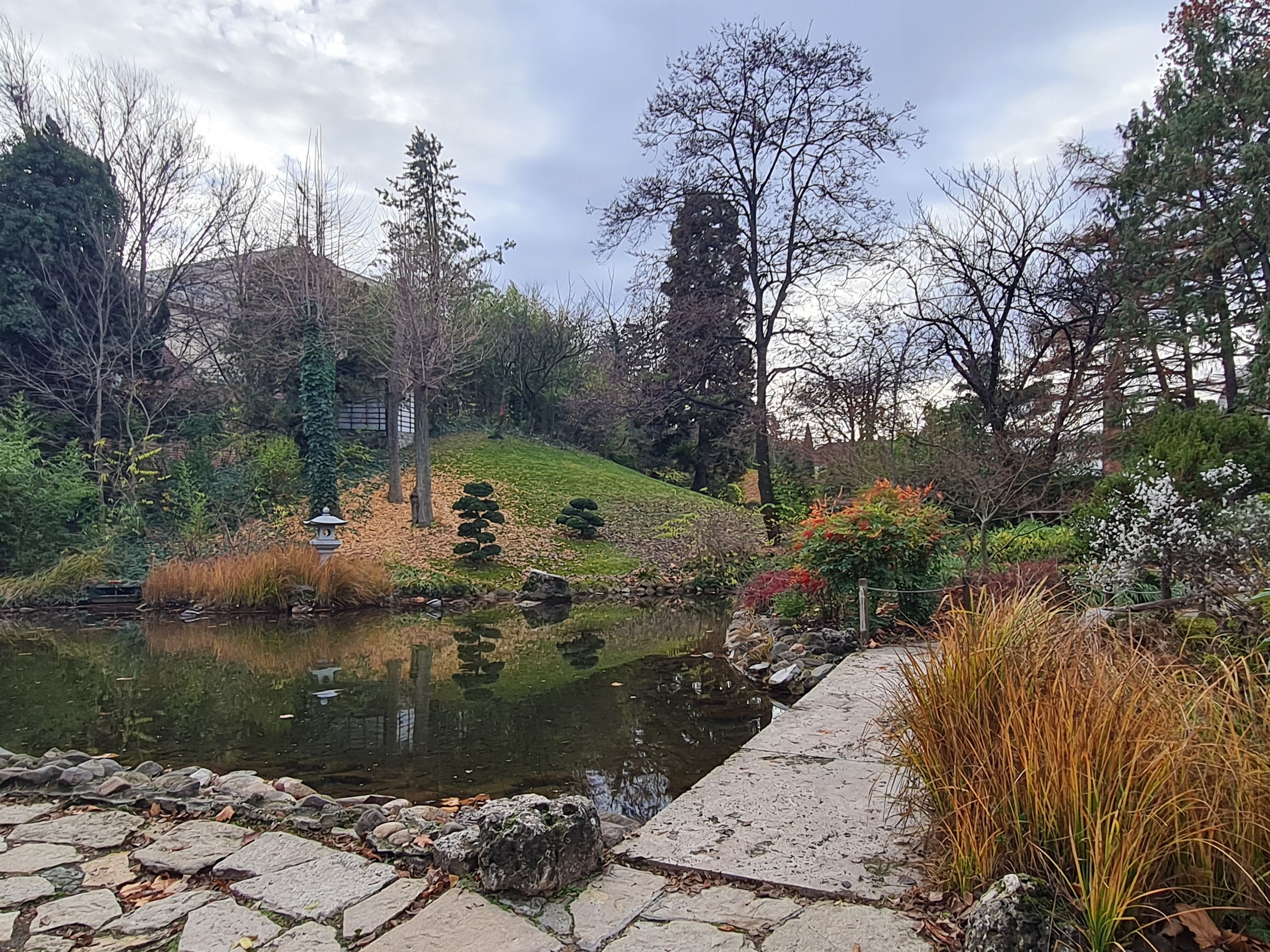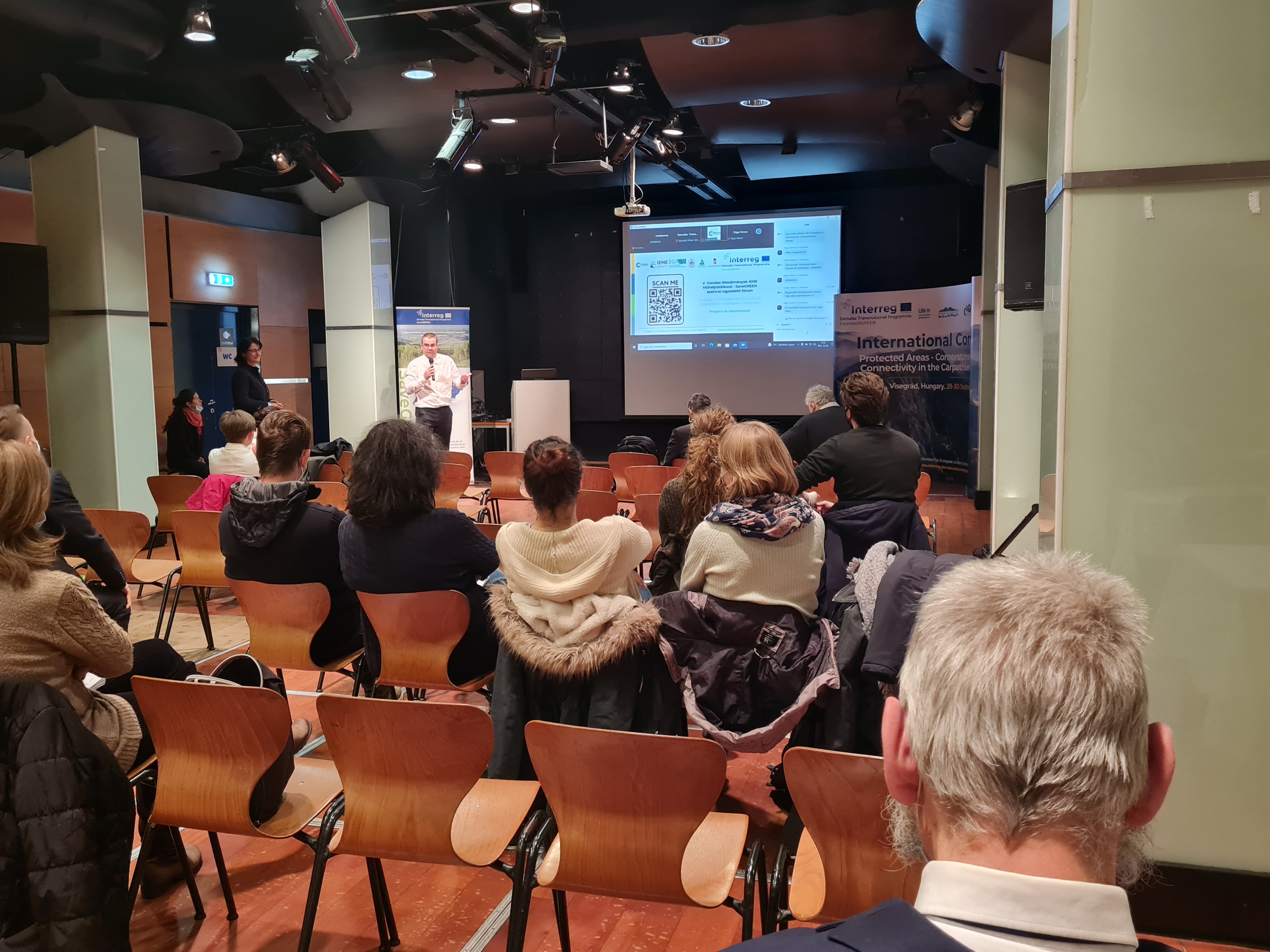SaveGREEN - Bringing transport infrastructure and its effects on wildlife into focus
05-02-2022
Hungary hosts the 5th IENE Workshop and the 3rd SaveGREEN Working Group Meeting.
Initiating a dialogue between universities and experts from different sectors were crucial goals of the two-day workshop on green infrastructure, which took place as part of a biannual meeting and workshop of the Infrastructure & Ecological Network Europe (IENE), held in Budapest.
Another important goal was to integrate both the latest SaveGREEN project results into university-level courses and new university research results into aspects of infrastructure project implementation. One such example is the incorporation of SaveGREEN inputs into aspects of sectoral knowledge and policy at local level.
The negative impacts for wildlife of inadequate linear infrastructure extend beyond the immediately obvious, such as vehicle/animal collisions. Landscape fragmentation has long-term effects as well, which the SaveGREEN project aims to explore and make known to a wider audience.
The IENE workshop presented several recent findings and project outcomes, such as: the results of the recently completed ConnectGREEN project (focusing on the movement of large carnivores through ecological corridors in the Carpathians), the CENTRALPARKS project (dealing with innovative habitat-mapping methods, such as laser-based remote sensing), and a Hungarian countrywide assessment on Green Infrastructure.

The Budapest Zoo & Botanical Garden provided a scenic backdrop for 3rd Working Group (WG) meeting and the IENE workshop. Photos courtesy of Viktoria Selmeczy and Eszter Sebestyén, CEEweb.
Moreover, relevant findings on wildlife impacts from existing and planned linear infrastructure were showcased, such as collisions with large carnivores in the area of Ajka, Hungary, the functionality of amphibian passages, the fish-ladder planning, and the bird-protection measures. Good and bad examples of underpasses were highlighted as well. With regard to botanical concerns, findings on endangered orchids along railways and other transport infrastructure were detailed: for example, the Lipidium oblongum, a widespread flowering plant of the mustard family, is a new, invasive alien species that poses a particular threat.
There was, in addition, plenty of supplementary material and discussion related to the following:
- Introduction of the SaveGREEN project pilot area in Nógrád, Hungary, its history, regulations, and the effects on wildlife of developed fish ladders.
- Introduction of the connectivity of national green infrastructure, and international and local cooperation in road-ecology studies.
- Introduction of issues related to national railway infrastructure: sustainability approaches, flora and fauna alongside railways and problems to be tackled.
- Ecological-corridor planning in the Carpathians, based on the habitat-suitability model, and other outcomes developed under the ConnectGREEN project.
- Methods on structural and functional mapping for ecological connectivity, plus the introduction of an application developed within the SaveGREEN project.
- Species-specific problems and results: e.g. studies on birds (i.e. the barn owl – Tyto alba) and various amphibians.
- Importance of roadside areas that can be shelters for several protected species (e.g. wild orchids).
- Important measures on railway-infrastructure maintenance, plus recent research outcomes on plantation, invasive species, adverse effects from pollution, and management of adverse geological effects.
- Importance of knowledge transfer from one project to the next: e.g. continuing ConnectGREEN project research within the SaveGREEN project.


Cross-sectoral discussions at the SaveGREEN Working Group meeting.
At the WG meeting, the SaveGREEN project’s associated strategic partners (i.e. Hungarian Ministry of Agriculture, National Infrastructure Development Corporation (Nemzeti Infrastruktúra Fejlesztő Zrt.) , and Duna-Ipoly National Park Directorate) and various stakeholders had the chance to meet, network, and declare their commitment to protecting biodiversity through the development and expansion of ecological corridors. The event was also an opportunity to share the knowledge and project outcomes with undergraduate students, while raising awareness of the importance of the proper planning, development and maintenance, and monitoring of ecological corridors.
Summary of outcomes:
Various outcomes from ConnectGREEN and SaveGREEN projects were presented to event participants, as listed below.
ConnectGREEN project outcomes:
- Study: ‘Methodology for Identification of Ecological Corridors in the Carpathian Countries by Using Large Carnivores as an Umbrella Species’
- Guidelines for identification
- Conservation restoration and management of ecological corridors in the Carpathian ecoregion
- Action plan on mitigating threats on ecological corridors in the pilot area in Hungary
- International action plans
Additional outcomes and results from ConnectGREEN can be found here.
SaveGREEN recent project outcomes:
- Local Cross-Sectoral Operational Plan (CSOP) for the Hungary-Slovakia cross-border pilot site
- ‘QField’ open-source mobile application on functional and structural connectivity.
Besides these recent outcomes, there was a brief introduction on the CCIBIS geoportal, which contains an ecological-corridor analysis and meta-data on habitats at species-level. SaveGREEN’s habitat mapping of ecological-corridor systems in the Carpathians was also presented, as well as a user-interface demo of QField application using real-life examples. The app was developed by OPENGIS.ch GmbH and upgraded within the project to map structural and functional ecological systems in the field. Finally, local and cross-sectoral monitoring plans for helping decision-makers were also presented.
Funding for GI development
A recent report on financial measures demonstrates a relatively high need for GI development in the partner countries, which have varying institutional backgrounds and professional capacity to promote GI development. The meeting provided an opportunity to introduce conflicts related to infrastructure development and ecological protection, with an emphasis on the importance of ecological connectivity and the role of ecological corridors. The main issues related to Hungary have to do with planning processes behind construction of the M2 highway: namely, a lack of hydro-biological research during the Environmental Impact Assessment (EIA) phase, and deficiencies in data collection resulting in poorly planned and ecological corridors, passes and combined crossways.
This important presentation was followed by a Q&A session on the Cross-Sectoral Operational Plan and other presentations that sparked a conversation between different stakeholders on conflicts surrounding spatial planning and environmental-protection endeavours. Opinions and recommendations will be in the final project documentation.
Conclusions and outcomes
Linear infrastructure and its effects on nature concerns many stakeholders. The overall aim of the workshop was to present the results of new research and discuss possibilities to join projects that deal with planning or construction of linear infrastructure and its environmental benefits.
In sharing local experiences, participants found that it would be desirable to include GI findings in spatial planning. Bottom-up initiatives are also important, as local people have a vested interest in protecting their local environment and surroundings. It cannot be highlighted enough that communication between planners, developers, researchers, and professional organisations is a key to success.
For this event, CEEweb for Biodiversity and MATE brought together almost 60 stakeholders representing several sectoral institutions from the local project partners and associative partners such as the National Infrastructure Development Corporation (Nemzeti Infrastruktúra Fejlesztő Zrt.), the Hungarian Ministry of Agriculture. The aforementioned 60-or-so event participants included representatives from the following entities and organisations:
- Public Roads Directorate
- Association for Toad Protection,
- Hungarian State Railways (MÁV)
- Lechner Nonprofit Ltd
- Uvaterv Zrt.
- University of Sopron
- University of Debrecen
- Hortobágy National Park Directorate
- Balaton-felvidéki National Park Directorate,
- Danube-Ipoly National Park Directorate
- Directorate of Water Management of the Central Danube Basin.
The next Hungarian working group meeting will be in spring 2022 spring, and the team expects similar enthusiasm and engagement from the participants.
Author:
Eszter Sebestyén, CEEweb
Contributed by:
Gabriella Nagy, CEEweb, Eliza Óhegyi, CEEweb
